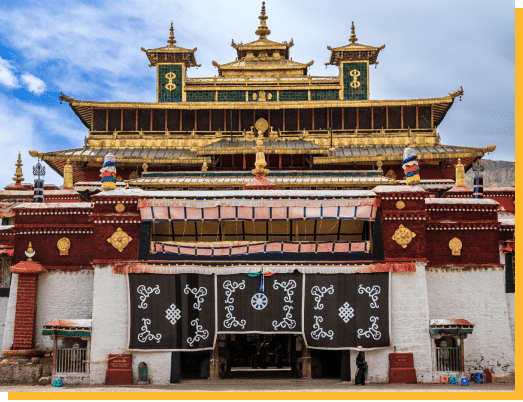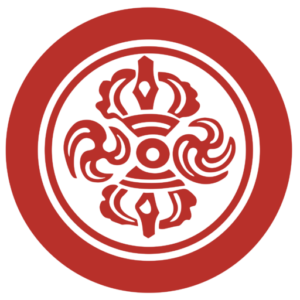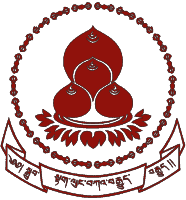About Samye Institute
What is Samye Institute?
About the Samye Platform
In order to find the motivation to practice authentically, you need to listen to teachings, study them and reflect on their meaning. These days, with our busy lives and students who are spread out all over the world, this can be quite a challenge. So I have worked with some of my students to create a place online so that anyone with an internet connection can find guidance and support for their practice. I feel that this sort of endeavor is essential in today’s incredibly fast-paced world, so that we always can find inspiration at the touch of a button.
PHAKCHOK RINPOCHE

Samye is the namesake of the Dharma activities of Phakchok Rinpoche.
In eighth century Tibet, the tantric master Guru Padmasambhava, the Dharma-king Trisong Detsen and the abbot Shantarakshita established Samye monastery. Guru Padmasambhava’s mastery of Buddhist teachings was perfectly complete and thus he is often referred to as a second Buddha. Samye monastery ushered in an era of unparalleled spiritual mastery. The timeless wisdom that was first promulgated by Padmasambhava passed from master to disciple in an unbroken lineage and this continues to this very day. Along the way untold numbers of students became realized masters of the tradition in their own right and even more found that this ancient wisdom transformed their lives.
Samye became a beacon of wisdom, compassion, and dignity in our world. Thus, for this reason, Samye is the auspicious name of our sangha’s Dharma activities. Inspired by the kindness of past masters, we have the idea to share these aspirations in a modern and accessible way through this online platform.
Our Vision

Samye Institute includes both online and live teachings, instruction, retreats, and events derived from authentic Buddhist wisdom traditions. It is a place where individuals seeking answers as to how to live a meaningful life can explore how to work with their minds.

Our aspiration is to offer tools and training to enable practitioners of all levels to practice authentically and confidently. Buddhist practitioners, both newer and long-term students, will find resources here to support their study, reflection, and meditation. Here you may find teachings on working with the emotions and the mind, introduction to meditation, training in compassion, Mahāmudrā meditation, and special practices unique to our tradition.

Samye is a platform for sangha and community building. Here, students from around the globe can gather in forums to discuss their practices. This builds a strong sense of community and teaches us to care for others. In caring for others, we also care for ourselves. Together we build a community.

The Chokling Tersar Lineage
Chokgyur Dechen Lingpa (1829-1870) was the “manifestation,” of King Trisong Deutsen’s son, Murub Tsepo also known as Yeshe Rolpe Tsal or Lhase Lotsawa. Another of his former lives was the great tertön, Sangye Lingpa, who revealed the Lama Gongdu. Padmasambhava hid many treasures and sealed them with a sacred aspiration to be revealed at a certain time for the benefit of future generations by a certain tertön, an emissary of Padmasambhava himself.
One of these incarnated tertöns was Chokgyur Lingpa who appeared in this world in 1828, born in the eastern part of Tibet in Nangchen, Kham. His name, birthplace, the chief recipients of his revealed teachings and the effect of the spread of his teachings were all prophesied by Padmasambhava.
The Chokling Tersar (New Treasures of Chokgyur Lingpa) is a collection of terma teachings revealed by Chokgyur Lingpa. These extraordinarily clear and profound heart teachings along with their assocated commentaries are contained in a body of literature filling more than forty large volumes. Phakchok Rinpoche is a fifth generation descendant and lineage holder of Chokgyur Dechen Lingpa .

The Riwoche Taklung Kagyu Lineage
The Taklung Kagyu lineage sprang from the realization of Taklung Tangpa Tashi Pal (1142-1210), a heart student of one of Gampopa’s main disciples, Pagmo Drupa. He founded the Taklung Kagyü (Tiger Command) lineage, whose main seat is Riwoche monastery in Kham. The lineage is upheld and passed on by three main masters: Kyabgön Shabdrung Rinpoche, Kyabgön Jedrung Rinpoche, and Kyabgön Phakchock Rinpoche. This lineage is renowned for studying and practicing both the teachings of Kagyu and Nyingma.

The Meaning of the Samye Seal
The seal used by Samye was revealed as a treasure by Orgyen Chokgyur Lingpa in Tibet in the 19th century. It is now used as the emblem for the Chokling New Treasures lineage (Chokling Tersar) as well as all of the Dharma activities of Phakchok Rinpoche and his sangha.
This seal is not a man-made logo — it is Guru Padmasambhava’s own personal seal that he concealed as a treasure to be revealed in the future for the benefit of fortunate dharma practitioners.


